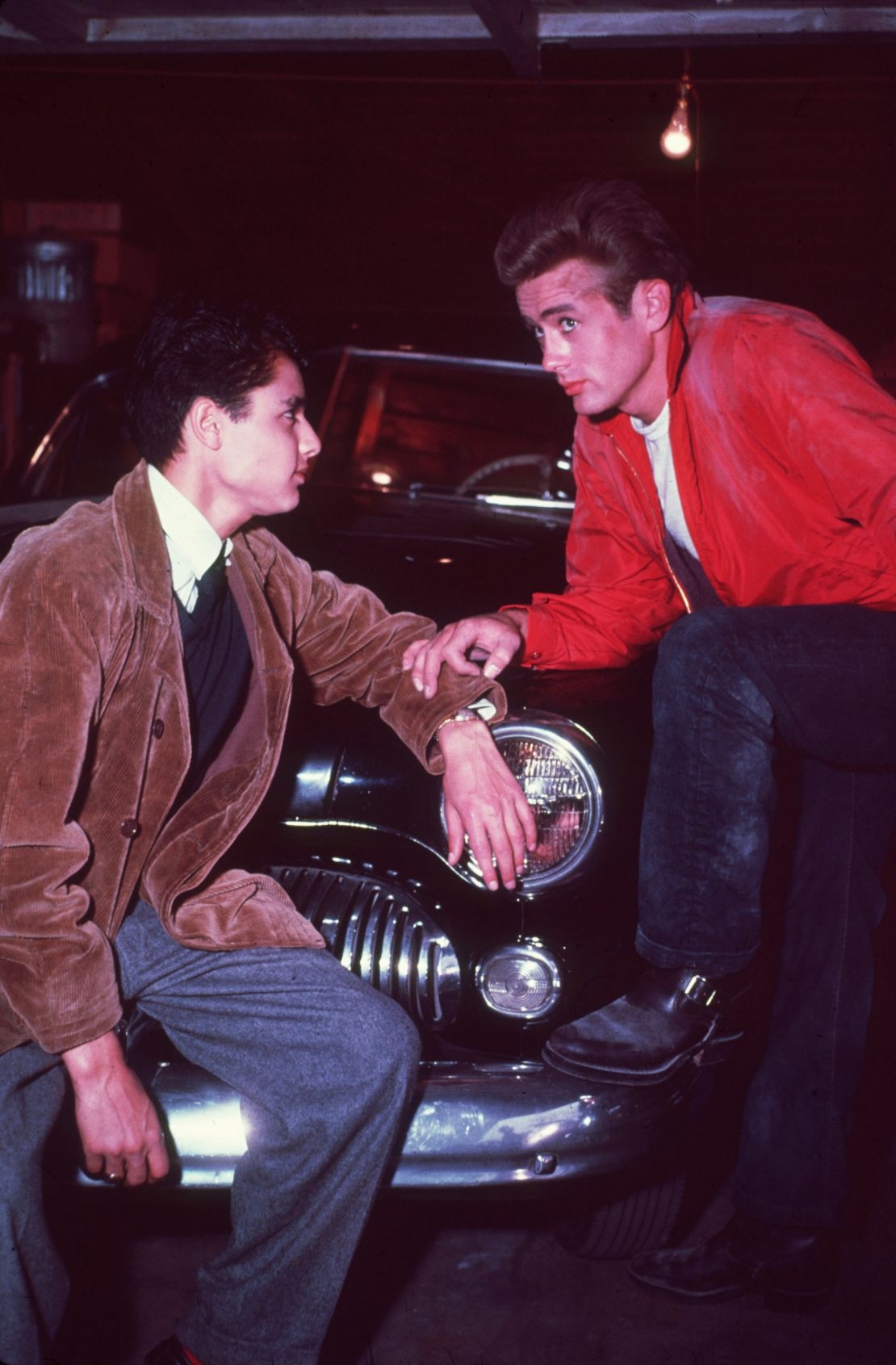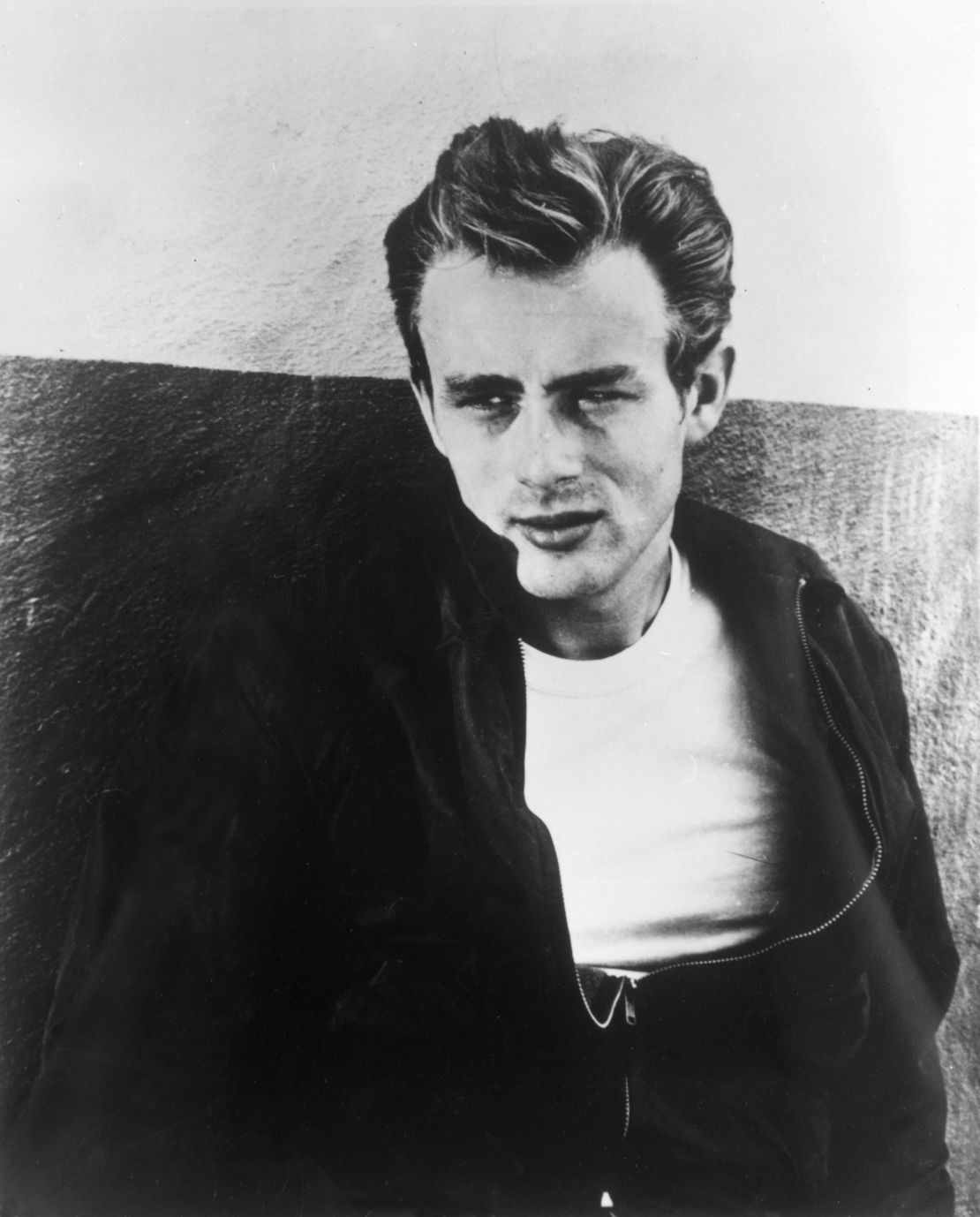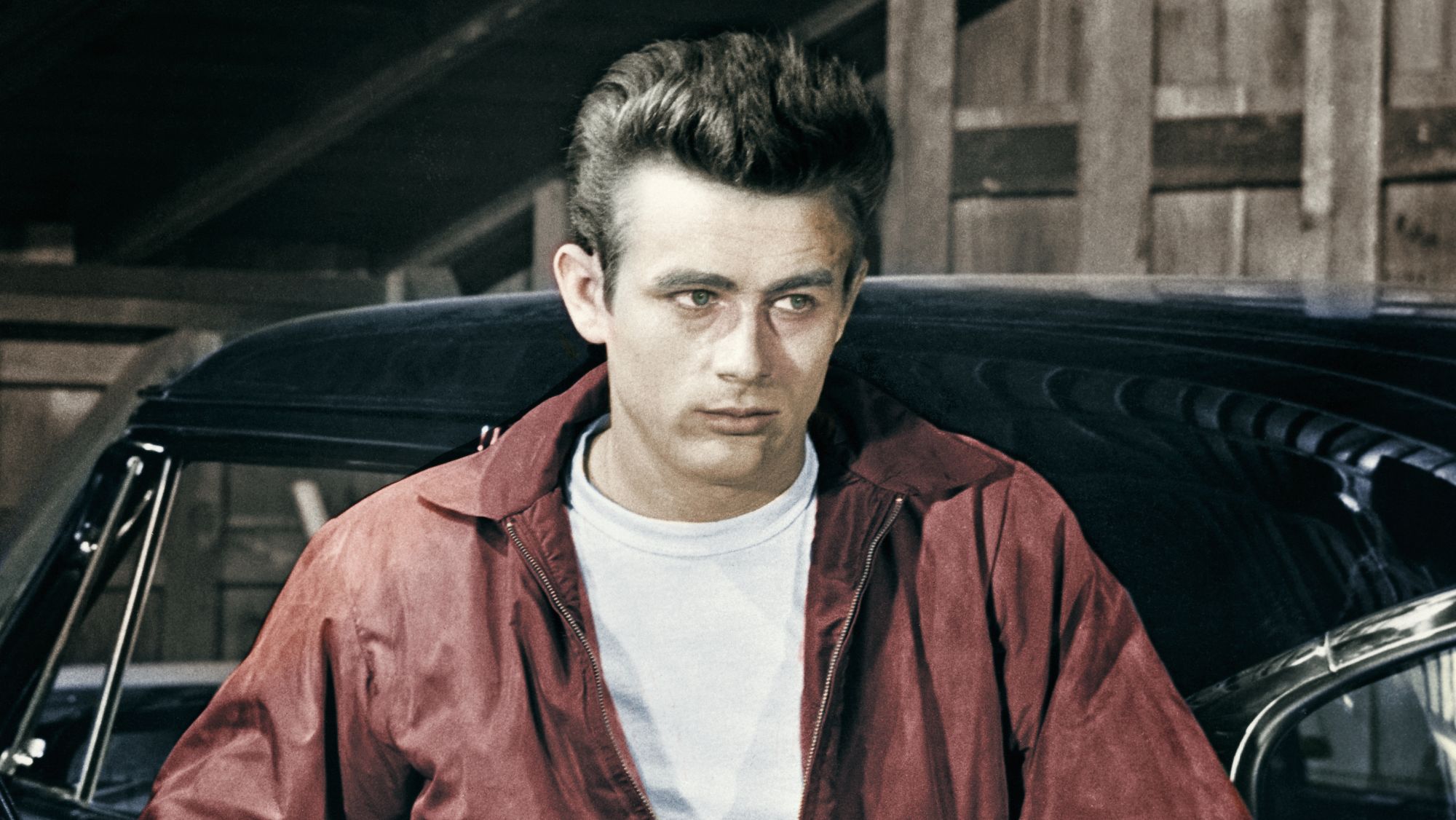Editor’s Note: Delving into the archives of pop culture history, “Remember When?” is a new series offering a nostalgic look at the celebrity outfits that defined their eras.
Remember when you first saw actor James Dean in a plain, white T-shirt, a cigarette casually dangling from his lower lip?
The Hollywood actor epitomized cool in the 1955 film “Rebel Without a Cause,” as restless teenager Jim Stark, whose combination of white tee, blue jeans and a red nylon jacket is now one of film’s most iconic ensembles.
Over the years, Dean’s portrayal of an angry, frustrated teen has resonated with rebellious youth and celebrities who have sought to embrace his air of casual cool.
Unsurprisingly, the whole look wasn’t casually thrown on, but was the result of studied efforts by “Rebel” costume designer Moss Mabry, according to the book “Classic Hollywood Style” by Caroline Young. Mabry spent several days at Los Angeles high schools before filming, observing what students were wearing, Young said. He also took inspiration from a photo of real college students that director Nicholas Ray had seen in Life magazine.

Of course, it’s not the first time a handsome, young Hollywood actor had appeared in a white tee. Marlon Brando wore one as army engineer Stanley Kowalski in the classic 1951 film “A Streetcar Named Desire.” Brando’s tee reflected its early origins as an undergarment worn by the US military.
Singer Elvis Presley, who was younger than both Brando and Dean, also liked the sleeves of his white tee short and tight. Presley served in the US military in the late 1950s, so of the three he had perhaps the most authentic claim (though was clearly also fond of more elaborate costumes).
When Dean wore it as the character Jim Stark, though, he created a uniform for rebellious teenagers, an outward sign of their inner frustration and boredom with a suburban world where their longing for excitement and new experiences had no place at all.
But the actor’s look and persona also came to represent a deeper level of teenage angst. With his cigarette and cool outfit, Dean’s Stark, an outcast who questions adult values and openly defies his parents, seemed to speak directly to a generation of high school kids that, albeit often privileged, had to grapple with the aftermath of World War II and the anxiety of the Cold War. Parental or official authority felt increasingly meaningless. Dean’s rebel style embodied all that.

At the time, it reflected young people’s personal style, making them feel as if they could really relate to Dean. In the 1950s, Denim was taking off as an integral part of the rebel wardrobe, after icons like Brando, Dean and Presley brought the workman’s staple to Hollywood and into pop culture.
Wearing a white tee and jeans also emphasized how differently teens were starting to dress from their parents, whose outfits generally consisted of conservative knee-length skirts and boxy jackets, tailored pants, shirts and ties. Dean’s combo captured the youth fashion of the time and elevated it to Hollywood heights.
Tragically, Dean died in a car accident less than a month before the film was released, but his most famous role has inspired the wardrobe of a number of other characters: John Travolta’s Danny Zuko in 1978’s “Grease,” Judd Nelson’s John Bender in 1985’s “The Breakfast Club,” Heath Ledger’s Patrick Verona in 1999’s “Ten Things I Hate About You,” and Robert Pattinson’s Edward Cullen in “The Twilight Saga” movies.
Fashion and pop culture also capitalized on the simple jeans and tee look. Think of Bruce Springsteen’s rocker uniform, Stussy’s and Supreme’s cult limited edition white tees and those iconic 1990s Calvin Klein ads.
Dean might have been the symbol of misunderstood youth in the 1950s, but his emblematic outfit remains every bit as relevant today.
